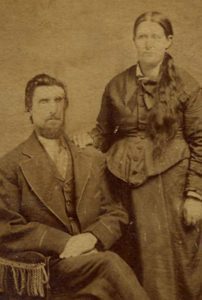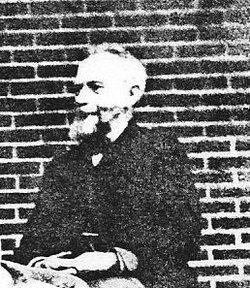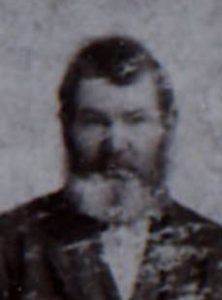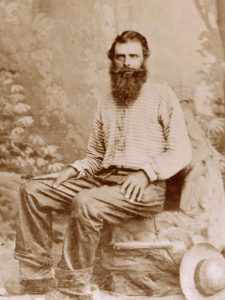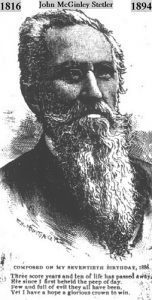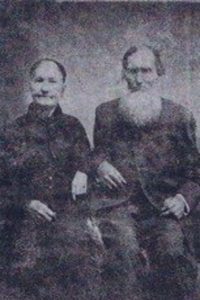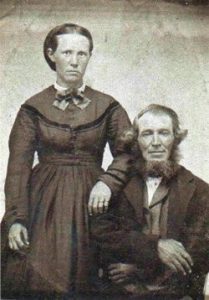
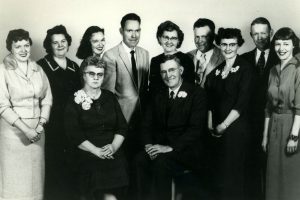
Although others were born after him, my dad was the last of his generation to stand.
He was one of eleven kids in the McCracken family. He outlived all his siblings and their spouses. He also outlived mom, her siblings, and her brother’s spouse.
As a middle aged man, Dad would have told you that would never happen. It never crossed his mind that he would live longer than Mom – let alone live to be in his nineties and be the last of his generation.. He knew the history of McCracken men dying young. After all, his dad had died at 67, his grandfather at 53, his Uncle Doc at 58, and two other uncles before they turned 70. Likewise, his great uncles on the McCracken side had all died by the time they were 66.
He also knew that Mom had several ancestors that lived to be close to one hundred. So, how did it happen that he lived so long?
Build Muscle

When Dad was growing up, he was relatively thin. However, when WWII broke out and his older brothers went to into the service, he took over running the farm. Around that time, he made a conscious decision to eat more and gain both weight and muscle.
Hard Work
His technique was simple. Just do whatever needed to be done. He used that philosophy throughout his life. Whatever needed done, he did. No job was impossible no matter how difficult or how much physical strength, mental strength, or shear determination was required.
He had learned from his father that “I can’t” was not an option. So, he took that as he could do anything – no matter what it was. Nothing was outside the scope of what he considered doable. He helped people with anything and everything. He worked on cars, motorcycles, farm equipment, state highway vehicles, and even a big rig. He wired the house and did plumbing. He baled hay and could do basically anything around the farm.
 Strength
Strength
Over the years, he gained amazing strength. As he aged, he may have lost some of his strength, but he still was far stronger than many in the prime of their life. One example was a loader attachment for the tractor that he had somehow placed in the barn. It took several men to remove it. Everyone was scratching their head as to how he managed to get it in there.
He also walked many miles during his life both when working for the state and around the farm. After he was age 80, he walked home from the other side of the creek *twice* in one day when the tractor had issues. And, he didn’t take the easy route of walking to the road and walking over the bridge and down to the house. Nope. He went the direct route through the creek, up the bluff and through the pasture with all of its rugged terrain.
Nine Lives
At one point, I started writing a story titled “The man with Nine Lives.” This is a good description of Dad. No matter what life threw at him, he stepped up to the challenge.
Polio
The first major scare came when he was in grammar school. One year he was very sick and missed a lot of school. He missed so much that his parents wanted to hold him back a year. However, the teacher informed them that he knew all of the material despite being absent so many days. He said that during this time the adults whispered about him a lot. He is not sure, but he believes that they thought he had polio. He did have one leg that was shorter than the other, which could have come from a bout with polio.
Run Over By A Tractor
The second major scare came when he was a teenage. I am not sure exactly how it happened, but a tractor ran over him right across his back. His mom was frantic and he proclaimed that he was fine and that the tractor hadn’t actually run over him. His mother told him to take off his jacket. She showed him the tire mark that went across it. He proceeded to go back to work.

In The Eye
Another scary incident happened when a stick hit him in the eye and was stuck there. Dewey drove him to the doctor. Don was with them telling Dewey to slow down and Dad was telling him to drive faster. If you knew Dewey, you would know how funny this is as he was never known to drive fast. Anyway, Dad came away from the incident with 20-20 vision.
10 Staples
The last incident I will mention happened when he was about 80 years old. He cleared out brush and tree limbs from the yard. He took them down to the pasture. While he was clearing them off the wagon, something happened. It isn’t clear if he lost his balance, stepped off the wagon, or exactly what occurred. Anyway, he woke up lying on the ground. He proceeded to go back to work only to find blood dripping off his head.
Now, he never was good with blood, but he somehow willed himself back onto the tractor and made it back to the house. He wrapped a towel around his head and waited for my sister to come home. When she arrived, he told her that she might want to look at his head when she finished putting away the groceries. Well, that turned into ten staples along the back side of his head and a night in the hospital for observation.
And, More . . .
Many other incidents occurred over the years. A wagon rolled over his ankle, he caught his foot in a corn picker, he caught his jacket in an auger, and many more. Yet, each time he seemed to come out of the situation not only without significant harm, but also stronger than ever.

Modern Medicine
Modern medicine came into play only a few times in his life. One year Dewey had pneumonia and Dad was doing chores for both himself and Dewey. The problem came when he got pneumonia, too. He ended up in the hospital for a week.
Then 2013 arrived. That year Dad spent plenty of time in the hospital. He had a septuple bypass, surgery for colon cancer, and a procedure on his carotid artery. The doctors said that they couldn’t do the surgery for the cancer without him having the bypass surgery as he wouldn’t live through it. They also told him that doing the heart surgery without the colon surgery was a waste of time. Basically, he needed to do both if he wanted a chance to live and have a reasonable quality of life.
He considered it carefully, and finally decided to do both surgeries. The heart surgery was lengthy and the recovery was difficult. Then, after he did rehab, he went back for the colon surgery, which was much easier on him. The carotid surgery was later in the year and was far more straight forward that the first two.
After that, he said, “No more surgeries.” Well, that lasted until cataracts on his eyes got so bad that he couldn’t read, which he loved to do. So, he had surgery to remove the cataracts. Doctors were amazed as his vision after the surgery was 20/20 and he was over 90. He did need reading glasses, but otherwise had perfect vision.
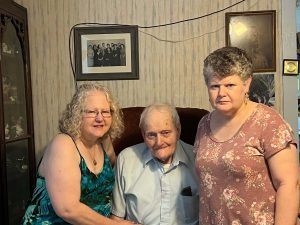
New Attitude
After his surgeries in 2013, Dad was asked why he was happy. He responded, “I’m 85 and I’m alive!” After he lived through those surgeries, he seemed to feel like he was invincible. Doctors even told him that overall he was healthier than they were and that he just might live to be 100. I think he set that as a goal. Although he didn’t make it, modern medicine gave him nine more years.
The photograph shows him on Father’s Day in 2022 just over two weeks before he passed. He was looking great right up until about a week later. We knew it was time when he suddenly could no longer stand. Yet, he still tried to get out of bed. As always, he had things to do.
 Strength
Strength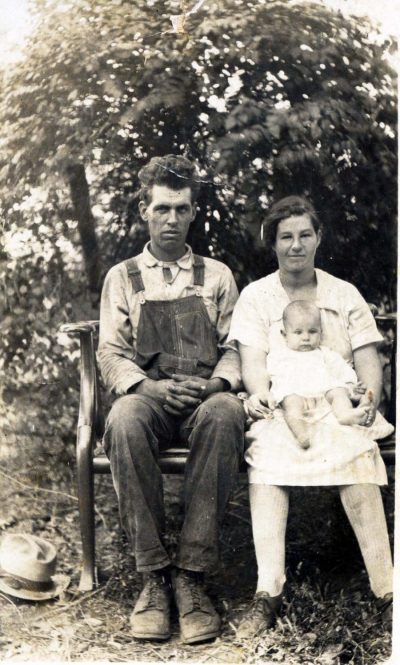
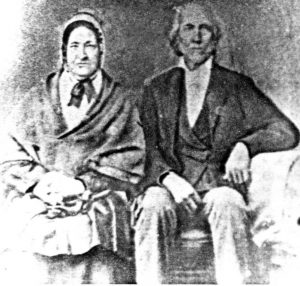
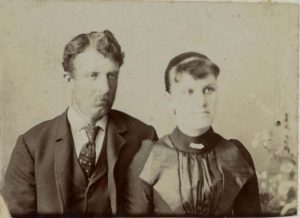
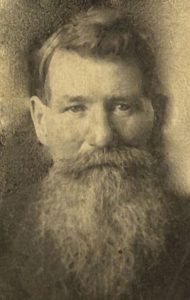
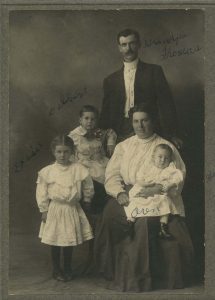


 Despite the sparse nature of the graveyard, the American flag could be seen gracing various stones throughout. What was really intriguing was the British flags, which were scattered throughout. Sometimes they were very close to graves with American flags. Research shows that 28 U.S. flags fly over the graves of Revolutionary War soldiers and 8 British flags fly over the graves of soldiers of the French and Indian Wars, which pre-dated America’s independence.
Despite the sparse nature of the graveyard, the American flag could be seen gracing various stones throughout. What was really intriguing was the British flags, which were scattered throughout. Sometimes they were very close to graves with American flags. Research shows that 28 U.S. flags fly over the graves of Revolutionary War soldiers and 8 British flags fly over the graves of soldiers of the French and Indian Wars, which pre-dated America’s independence.


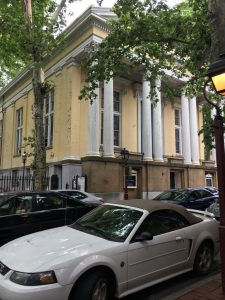

 The graveyard at Old Pine is anything, but sparse. Matter of fact, bodies are buried up to six people deep (and maybe more). They basically buried people head to toe, shoulder to shoulder. And, some places it doesn’t appear that there is that much space between where the bodies are said to have been buried.
The graveyard at Old Pine is anything, but sparse. Matter of fact, bodies are buried up to six people deep (and maybe more). They basically buried people head to toe, shoulder to shoulder. And, some places it doesn’t appear that there is that much space between where the bodies are said to have been buried.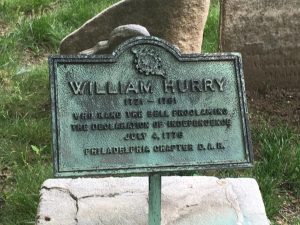





 The Research
The Research Later a business card for her husband’s business was found among my grandma’s postcards and calling cards.
Later a business card for her husband’s business was found among my grandma’s postcards and calling cards.


